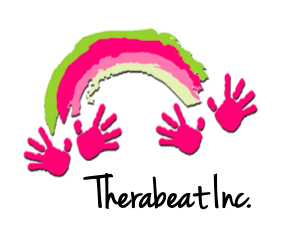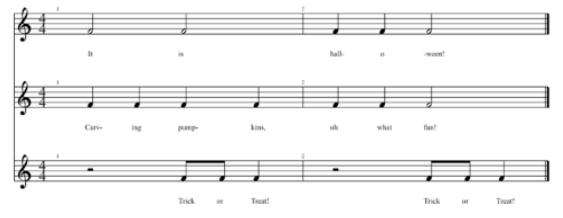(Walworth, D., Rumana, C. S., Nguyen, J., & Jarred, J., 2008, p. 355)
50 million Americans suffer chronic pain spending over $100 billion a year on pain management. Chronic pain is the most common reason individuals pursue medical treatments and 88% of doctors felt that their medical training did not prepare them for treating this pain. Pain is a growing problem that is becoming even harder to treat (Schim, 2004, p. 4).
There are many causes and traits of chronic pain. Pain can be caused by many diseases, disorders, injuries, or have no known cause. However, chronic pain is defined as pain that lasts for six or more months and is not a warning sign or telling of some other health concern. This pain could be caused by the back, rheumatoid arthritis, osteoarthritis, angina, the head, or by injury to any body part (Schim, 2004, p.5-6).
Two mechanisms that are important in the cause and perpetuation of pain are inflammation and neuropathy. This damage or defect of tissue and the nerves and nervous system play a significant role in pain. Sensitization also plays a role in chronic pain, causing increased activity in neurons, decreased pain thresholds, and a strong response to stimuli. Many patients suffering chronic pain have a poor quality of life, decreased physical ability, and lower overall health scores. Not only do individuals have lousy physical health, their mental health is affected, with heightened anxiety, little self-control or endurance, and approximately 50% suffering depression (Schim, 2004, p.5-6). Patients begin to feel like the victim of their pain, which begins a vicious cycle of feeling consumed and controlled by pain. This cycle can lead to lowered overall functioning, ability to work, emotional distress, and poor social life (Davis, 2008, p. 310-312 ).
Dr. Lenore Schvankovsky and Peter Guthrie developed a list of the ten essentials of a patient. This applies not only to a hospitalized patient, but a patient with any condition. An individual needs to understand their illness and limitations, maintain a social life, prevent putting things off due to illness, exercise, and continue living life. They also believed it to be extremely important to adapt to the medical setting with their family while learning and using coping methods which reduce anxiety or fear of illness. Music therapy brings a sense of warmth and familiarity to an unfamiliar setting like the hospital environment and helps meet these needs by giving social, emotional, and motor reinforcement (Davis, 2008, p. 319).
It is difficult to establish goals when working with chronic pain because of the variety in diagnosis and symptomology. Treatments and therapies for pain differ greatly amongst individuals based on their condition. Common treatments include medication, physical or occupational therapy, acupuncture, or other alternative therapies. Treatments focus on treating pain related symptoms because the pain itself is so difficult to treat (Schim, 2004, p.8-10).
Like the treatment and therapies used to treat chronic pain, there are not standard therapeutic goals, but specific goals that are targeted to each individual and their condition. Creating realistic goals is an important step in treating and managing chronic pain. Mayo Clinic has developed a system called SMART goals, which is an acronym for specific, measurable, attainable, realistic, and timely. Some generalized goals that could be applied to any illness or condition are to exercise, focus on maintaining good overall health, reduce medications, manage emotions, and find balance (Bruce, 2014, n.p.). The most common goals among pain management include better comfort, well-being, control, and involvement in treatment (Bailey, 1985, p.26). It is also important to lower tension, pain perception, anxiety, and stress (Music Therapy with Specific Populations, 2010, p. 4).
Music therapy is used among patients suffering chronic pain to try and achieve these goals. For most effective treatment, a patient’s musical background or preferences are always considered in order to come up with the best plan. Familiar, patient-preferred music has been known to reach patients who are distant or isolated and may help build relationships and increase communication (Bailey, 1985, p.26). Music therapy when used as a distraction from pain, helps lessen pain perception, anxiety, and stress. Not only does music therapy help improve quality of life, it has been shown to improve respiration, blood pressure, cardiac output, relax tension, and shorten hospital stays (Music Therapy with Specific Populations, 2010, p. 4). Combined with other therapies, music therapy helps to increase patient’s endurance. Music can lessen the patient’s attention to unpleasant parts of therapy, such as repetition or pain and lead to improved results (Davis, 2008, p. 319).
Anxiety, fear, and tension not only add to the awareness of pain, but also increase muscle tension that interferes with breathing and increases overall pain perception (Davis, 2008, p. 319). Common goals of music therapy with this population are to distract from anxiety and stress, to elevate mood, and achieve better overall thoughts and feelings. Music helps provide a steady tempo for rhythmic breathing and structure for release of tension (Music Therapy with Specific Populations, 2010, p. 4). The feeling of pain can become less when it is no longer the focal point, and the mind focuses on a positive stimulus such as music (Davis, 2008, p. 321).
Music therapy has been shown to affect biologic and physical factors such as a stronger immune system, higher oxygen saturation, and significantly lower counts of salivary cortisol, a stress hormone (Bailey, 1985, p.27). Interventions such as singing, dancing, playing instruments, guided listening, lyric analysis, and songwriting are commonly used (Walworth, 2008, p. 356-357). Music is often used in rehab facilities to help divert the patient’s attention from the pain and lessen overall pain perception (Lim, 2011, p. 125). Music therapy can trigger the release of endorphins, which work as the body’s natural pain killers and improves overall well-being. With the use of music therapy patients have experienced improved effects from pain killers and anesthetics, and have not required as much medication (Davis, 2008, p. 324).
As chronic pain has become the most common ailment in America, the importance for understanding and adequate research has risen. Since chronic pain affects so many aspects of the mind and body, it is crucial to address and manage the struggles that suffering causes along with learning to live a functional life. By creating realistic goals and treatment plans to improve quality of life an individual can begin to understand their condition. Though there are many causes and conditions creating chronic pain, understanding a condition becomes the foundation of a strong treatment plan and the ability to manage pain.
-Rachel Buchheit, Music Therapy Intern
References
Bailey, L. M. (1986). Music therapy in pain management. Journal of Pain and Symptom Management, 1, 25-28. Retrieved August 12, 2019, from https://www-sciencedirect- com.bunchproxy.idm.oclc.org/science/article/abs/pii/S0885392486800240
Bruce, B., & Harrison, T. (2014) Mayo Clinic Guide to Pain Relief (2nd ed.). Google Books. https://books.google.com/books?id=sO4aDAAAQBAJ&printsec=frontcover&dq=Mayo+ Clinic+Guide+to+Pain+Relief&hl=en&newbks=1&newbks_redir=0&sa=X&ved=2ahUK EwiotoKYuoPnAhURSN8KHbASBxgQuwUwAHoECAYQCA#v=onepage&q=Mayo% 20Clinic%20Guide%20to%20Pain%20Relief&f=false
Davis, William B., Kate E. Gfeller, and Michael Thaut. (2008). Chapter 11: Music Therapy, Medicine, and Well-Being. In The American Music Therapy Association, An Introduction to Music Therapy: Theory and Practice (pp. 305-41). Silver Springs, Maryland. The American Music Therapy Association.
Lim, H., Miller, K., & Fabian, C. (2011). The Effects Of Therapeutic Instrumental Music Performance On Endurance Level, Self-Perceived Fatigue Level, And Self-Perceived Exertion Of Inpatients In Physical Rehabilitation. Journal Of Music Therapy, 48.2, 124- 148.
American Music Therapy Association. (2010). Music Therapy with Specific Populations: Fact Sheets, Resources & Bibliographies: Music Therapy and Pain Management. American Music Therapy Association. https://www.musictherapy.org/assets/1/7/MT_Pain_2010.pdf
Schim, J. D., and Stang, P. (2014). Overview of pain management. Pain Practice, 4.1, 4-21. https://web-a-ebscohost-com.bunchproxy.idm.oclc.org/ehost/pdfviewer/pdfviewer?vid=1&sid=c777f73e-03f1-4aa7-8222-e3194f921782%40sessionmgr4007
Walworth, D., Rumana, C. S., Nguyen, J., & Jarred, J. (2008). Effects of live music therapy sessions on quality of life indicators, medications administered and hospital length of stay for patients undergoing elective surgical procedures for brain. Journal of Music Therapy, 45.3, 349-360. https://search-proquest-com.bunchproxy.idm.oclc.org/docview/1092829/fulltextPDF/EFBC5892C2754446PQ/1? accountid=8570








